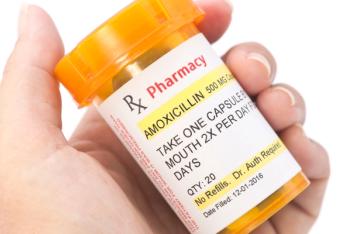
Excipient Innovation, Safer Solvents, and Supply Chain Resilience
Nigel Langley of gChem stresses excipient innovation, safer solvents, and supply chain resilience for pharma’s future in part 2 of a 2-part interview related to his presentation at CPHI Europe 2025.
*Access a full transcript of the video interview below.
In this part 2 of a 2-part interview regarding his presentation, “Challenges to the Sustained Availability of Excipients” at CPHI Europe 2025, held Oct 28-30 in Frankfurt, Germany, Nigel Langley, Global Technical Director of Life Sciences at gChem and immediate past chair of IPEC-Americas, highlights several pressing challenges and opportunities shaping the future of pharmaceutical formulation, excipient innovation, and supply chain sustainability.
Langley stresses the risks of single sourcing in the pharmaceutical supply chain, particularly for excipients and raw materials. To mitigate these vulnerabilities, he recommends strategies like multi-site global manufacturing or maintaining safety stock in strategic regions. He emphasizes that sustainability in sourcing and manufacturing must now be central to pharma operations. As an example, he points to dimethyl sulfoxide (DMSO), a Class 3 solvent, as a safer and greener alternative to the widely used but more toxic Class 2 solvents like dimethylformamide and N-methylpyrrolidone. With growing regulatory restrictions and environmental pressures, Langley argues that transitioning to safer solvents is both a sustainability imperative and a patient-safety priority.
Langley turned to excipient innovation, a space he describes as lagging behind the increasing complexity of drug modalities. Despite growing need, regulatory barriers remain a significant hurdle. FDA’s “PRIME” process, designed to review novel excipients independently of drug submissions, raised industry hopes but has stalled without clarity. Langley warns that relying on excipients that are decades old limits the ability to optimize new formulations. He advocates for stronger collaboration between pharmaceutical companies and excipient suppliers to foster innovation, moving beyond transactional relationships toward true partnerships where challenges are communicated early in development.
Langley also notes academia’s potential to drive excipient innovation by developing novel chemical entities, though he acknowledges the gap between university discoveries and commercialization. Adoption hesitancy among pharma companies—driven by perceived risk of pairing novel APIs with novel excipients—further slows progress.
Finally, he circles back to sustainability, underscoring the importance of carbon footprint assessments, responsible sourcing of raw materials, and preparation for a future in which Class 2 solvents may be banned. For Langley, proactive change, collaboration, and innovation will be essential to ensuring the resilience and advancement of pharmaceutical development in the coming decades.
Check out
Transcript
*Editor’s Note: This transcript is a direct, unedited rendering of the original audio/video content. It may contain errors, informal language, or omissions as spoken in the original recording.
Single sourcing is something that needs to be considered by all pharma companies if they're single source on it raw materials and obviously including excipients. One way to overcome single sourcing is to provide the opportunity of supply, either for a company that manufactures in more than one manufacturing site globally the same product, or if they don't, then to have safety stock in different parts of the world, so that it compensates for any challenges they may have in the supply chain. The sustainability of supply chain as well, especially as it reflects to gChem’s business with DMSO, I think I see an opportunity for DMSO as a much safer, greener solvent alternative, because it's a Class 3 solvent, compared to Class 2 solvents, which are currently used in drug formulations and drug synthesis, in particular dimethylformamide for peptide synthesis, as well as API synthesis and also N-methylpyrrolidone. These are class 2 solvents.
So for sustainability, to be honest, I see no reason why, when there's a very safe alternative solvent, why formulators in pharma companies would choose to use in the future Class 2, more toxic solvents when they don't need to So sustainability in that case, can be rectified by alternative, safer materials, which is much, much healthier and much better for the patient outcome.
Novel exceptions are really needed, in my opinion, they're needed more now than ever, but there's still some very big barriers to their implementation. We were very hopeful when the Prime process was actually introduced by the FDA, maybe three years ago now that there might be a mechanism where novel excipients, or new chemical entities as novel excipients, could be reviewed independently from the drug product submission, and four candidate products were actually started in that program. We have not heard back. IPEC has asked this question many times to the FDA. We haven't heard back from the FDA, where that prime process is actually going to be a full program pilot. We suspect that it's been either on hold or stopped, but we haven't had that confirmed. That was a good opportunity for novel excipients to have a little bit more accessibility, compared or in relation to existing excipients to be used in drug formulations from an early stage.
But it's not so easy. So, at one point you need innovation, and I personally believe that without excipient innovation, we're going to have a major problem in the future. Why? Because the drug modality is increasingly becoming more complex, and companies are using excipients, some of which are 60, 70, 80 years old. And there's a challenge to actually mold those into the desired functionality and properties without actually designing something that was fit for purpose. So, excipient innovation has not kept pace with drug innovation and how that might be possible, again, my opinion is that pharma companies need to have a much closer collaborative relationship with excipient suppliers, rather than just seeing them as a source of excipients and a vendor. They need to work very closely and really communicate early on what their challenges are in a particular formulation and what the need is for an excipient to meet that challenge. Without that, you're not going to get the innovation that we need to have.
I think for sure academia has a very important role in what's going to happen in maybe 10-20 years’ time in drug formulation. Yeah, they have the scope to actually develop new chemical entities or novel excipients. That's fine, but it's the translation of those into a drug product and commercialization that still remains. So. although there may be more candidates that potentially come out from university, there's still the tox cycle, the safety aspect of these new materials, that need to be proven. And they need to be then adopted by a pharma company. We have a saying in the industry that pharma companies like to be first to be second. They're waiting for somebody else to take a novel excipient through, in many cases, to completion, so phase III and an approval of the drug, and then the novel excipient is a little bit more, well, safer, or it's less risk. It's a big risk to take, a perceived risk for a pharma company. They only, they have their API if they have to have a novel excipient as well, that's almost a double risk that they're taking. And the way to combat that, again, I believe, is much closer collaboration between the two parties, and then it will work.
I think the first thing, and I think this is already ongoing, many companies now have a very sound way of assessing their carbon footprint of how they manufacture, as well as the pharma companies, there's obviously that sort of sense and directive, and it's part of being in the business to provide that type of information. I think sustainability on raw materials sourcing is critical. Again, that goes back to knowing your supplier very well and where the material is being made, and whether those raw materials are being sourced by the excipient company to make their excipients as well. So, it's all about communication to make it sustainable. I touched on earlier about the solvent side, or the excipient side, with respect to safety, sustainability, with respect to the DMSO, really should be continued into the safer approach, which is not the Class 2 solvents, in my opinion, in the future, as they potentially may get banned. You know, we've just had dichloromethane banned, which is a class 2 solvent. Dimethylformamide, in certain industries and REACH in Europe, is now being banned. So, it's probably a matter of time that that type of solvent will be removed. It takes time, but there's a reason to actually make those changes. Are those solvents really sustainable for the next few years if there's a threat that they will not be available in the future, and a lot of drug products are formulated with them, as I mentioned.
Newsletter
Get the essential updates shaping the future of pharma manufacturing and compliance—subscribe today to Pharmaceutical Technology and never miss a breakthrough.





